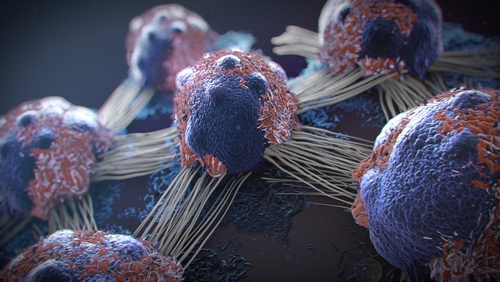A study published in the first issue of the scientific journal Nature Biomedical Engineering has described new tools that enables researchers to determine the force exerted by the different solid components of a tumor — solid stress — improving understanding of tumor cells and progression.
“It has long been known that tissue stiffness is higher than normal in fibrotic tumors — tumors containing significant amounts of collagen and other connective tissues — and that has been linked to several hallmarks of cancer, including tumor growth, invasiveness and metastasis,” said Rakesh K. Jain, PhD, senior author of the study in a press release.
The study, conducted by the research team from the Steele Laboratories of Tumor Biology in the Massachusetts General Hospital Radiation Oncology Department, highlights the development of experimental and mathematical frameworks in order to provide two-dimensional mapping, sensitive estimations, and local quantifications of solid stress in tumors, metastatic lesions and even live animals.
“Solid stress is different from stiffness: It is the mechanical force transmitted within fibrotic tumors, and like a compressed spring, it accumulates and is stored as elastic energy within a tumor as it grows,” Jain explained.
For more than a decade, Jain and his team have studied solid stress in tumors and finding ways to measure it. Several studies have demonstrated the contribution of solid stress to tumor progression by diminishing the oxygen supply to the tumor cells. This effect is known to reduce chemotherapy and radiotherapy effectiveness. Recently, the team found that solid stress in tumors also is involved in initiation and migration of tumor cells, leading to the formation of metastatic lesions.
Development of new therapeutic strategies to target components partly responsible for solid stress, such as collagen and hyaluronic acid, are currently being tested in an MGH clinical trial (NCT01821729), as a way to enhance the results of conventional therapies.
“Similar to the methods we previously developed to measure solid stress, these new methods could also be used to measure the results of solid stress-reducing agents,” Jain said.
The new tools described in the study, established by performing measurements in experimental mouse models, but also in human samples, showed that solid stress and stored elastic energy actually may be different in primary tumors and metastatic lesions. This is mainly due to the cells that originate the tumor, but also the surrounding microenvironment. Overall, as a tumor grows, its solid stress increases and the normal cells surrounding a tumor also contribute to the solid stress within the tumor.
“The characterization of solid stress would also be beneficial in treatment of cancer in obese patients. We recently found that cooperation between fat cells, immune cells and fibroblasts in pancreatic tumors exacerbates the fibrotic microenvironment in obese patients, further promoting blood vessel compression. This is probably the most significant consequence of solid stress identified to date, and characterizing the response to agents designed to alleviate solid stress could improve the dismal outcomes of this often-deadly cancer,” Jain concluded.


